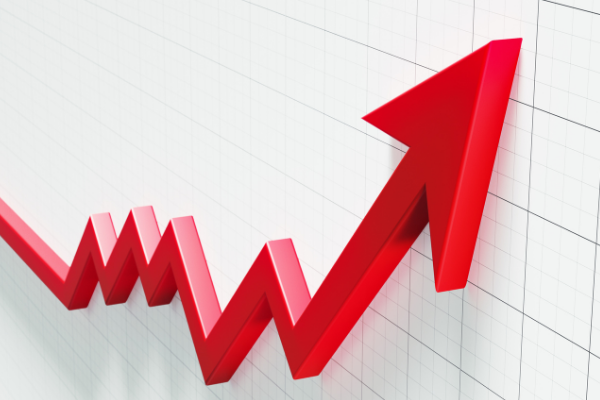
By now, most Americans are aware that high inflation has permeated the global economy, resulting in higher prices for everything from food to gasoline, furniture, cars, and energy. A delicately balanced global supply chain, made leaner and leaner over decades to improve efficiencies, proved incapable of weathering a shock like a global pandemic without severe disruption.
Aggressive measures to stimulate the economy during the worst of the pandemic likely contributed to a better-than-expected recovery out of the stay-at-home orders, and since vaccines rolled out in early 2021, the economy has seen a steady and increasing surge in demand. Along with low unemployment, healthy and strong consumer demand in the United States is often good news. Although with a severely constrained supply chain, both for goods and labor globally, the high demand and low supply dynamics are driving inflation higher in a textbook manner.
Under the Federal Reserve Act, U.S. Congress has assigned the Federal Reserve two jobs, or a dual mandate. One is to promote maximum employment, and the other is to maintain stable prices. The Fed’s tools to address these goals are limited and not terribly precise. They can affect liquidity, or the money supply, and they can raise or lower interest rates.
After two years of being as stimulative as possible, the Federal Reserve is now being forced to aggressively reverse course and tighten monetary conditions to fight inflation. Notably, these measures will not be able to address the supply side difficulties that are being exacerbated further by Russia’s ongoing invasion of Ukraine, and by renewed pandemic lockdowns across China. They are, however, expected to help moderate some of the hottest areas of the economy such as housing and real estate.
Investors Advised to Stay the Course
According to the Wall Street Journal, “Investors are still facing the most aggressive tightening of U.S. monetary policy since 2000 — the last time the central bank raised rates by a half-point. Though many investors say the market setup then was drastically different from the one now — with valuations then higher and many of the highest-flying dot-com firms lacking long-term business prospects — it isn’t lost on them that the year ended with significant declines for the major indexes.”
Importantly, the beginning of this tightening cycle by the Fed is not bringing their policy to highly restrictive levels, but is initially just moving out from the accommodative levels where they have been. After three straight years of 18%+ returns in markets, some normalization of monetary policy and price corrections were expected.
In our view, much of the current tightening cycle is already priced in, and it has been a painful year for stocks and bonds. Often when the urge to take action and de-risk a portfolio is highest, the payoff for such trading is lowest. One of the best actions investors can take right now is evaluating any immediate term cash needs from portfolios and confirming that your equity allocations otherwise match your time horizon and goals of the portfolio.
It’s likely that volatility may persist or even worsen in the near term, so maintaining the context that your equities are for medium-term needs 3- to 4-plus years in the future will be helpful.
An Unexpectedly Weak Quarter for the GDP
In other news, the U.S. gross domestic product (GDP) surprised to the downside in the first quarter, registering a -1.4% decline. That followed a particularly strong fourth quarter to end 2021 that saw +6.9% GDP growth.
Many factors contributed to the weak quarter for GDP, including the Omicron surge of COVID-19, the timing of businesses restocking their inventory, and most of all a wide trade deficit between imports and exports for the quarter.
This trade dynamic was widely viewed as the result of short-term supply chain issues and is expected to reverse later in the year. U.S. consumer spending, accounting for about two-thirds of GDP, rose at a healthy +2.7%.
The risk of recession, defined as two consecutive quarters of GDP contraction, has received a lot of attention recently with the numerous and escalating risks to markets and to the economy. Many expect, however, that the second quarter of this year will bounce back to positive growth, and that recessionary risks are most apparent a few quarters away depending on the trajectory and the impact of the Federal Reserve’s monetary tightening policies. Signs that inflation has peaked and is heading lower will be a welcome and important signal to markets.
Markets at a Glance: May 2022
The Dow Jones Industrial Average (DJIA) finished April at 32,977, down -4.91% for the month, down -9.25% so far for the year. The S&P 500 closed April at 4,132, down -8.80% for the month, down -13.31% year-to-date. The NASDAQ Composite fell -13.26% in April, down -21.16% for the year. Small-company stocks as measured by the Russell 2000, ended April down -9.95% for the month, down -16.98% year-to-date. Consumer Defensive (+1.96%) was the only positive sector in April.
As always, we are actively monitoring the markets, regulatory groups and economic indicators to bring you the most up-to-date information and guidance. Please don’t hesitate to reach out to us with any questions at 800-858-6127, Ext. 6.
